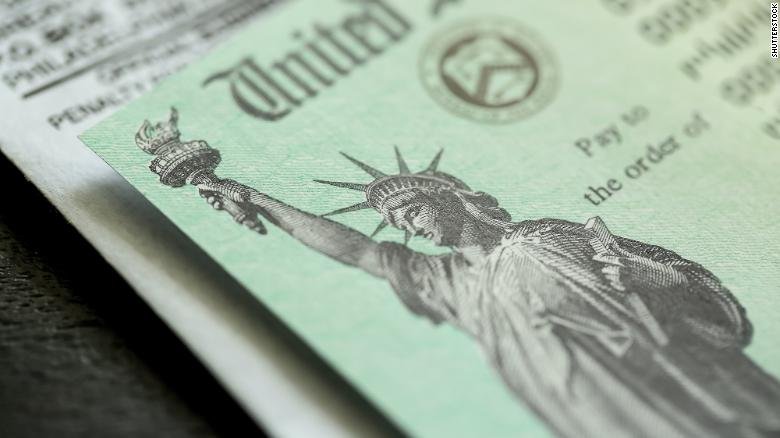Why you may have to wait until next year’s tax season to claim all your stimulus benefits

Millions of struggling Americans are already accessing the assistance from the Democrats’ $1.9 trillion relief package that President Joe Biden signed earlier this month — including stimulus payments and enhanced unemployment benefits.
But not all the aid in the massive law will be available right away. In fact, eligible Americans won’t fully benefit from several of the provisions — such as the new child tax credit — until a year from now, when they file their 2021 tax returns.
“We are going to see these waves of relief,” said Kathy Pickering, chief tax officer at H&R Block. “There is certainly relief that’s coming right now and over the summer as part of the American Rescue Plan. And then there will be other provisions that people will file on their tax return next year to be able to get additional benefits.”
Federal agencies are still determining the timing on some of the measures.
For instance, the Internal Revenue Service Commissioner Charles Rettig last week said that the agency will likely be able to automatically issue refunds to jobless taxpayers who are now eligible for a tax break on their first $10,200 in federal unemployment compensation but filed their returns before the law was signed in early March.
Here are some benefits you may not see until next year at tax time:
Child tax credit
Many families will benefit from changes lawmakers made to the child tax credit. But they’ll have to wait until next year to collect at least half of the money.
Congress boosted the credit to $3,600 for each child under 6 and $3,000 for each child under age 18 for 2021. Until now, it was up to only $2,000 per child under age 17. The stimulus package also made the credit fully refundable so more low-income families can benefit.
Another key change is that parents can receive half the credit in periodic payments this year, starting as early as July. But they’ll get the rest with their tax refunds next year. Just how it will work will depend on how quickly the thinly-staffed IRS can implement the provisions.
Families can also opt to receive the entire credit as a lump sum at tax time, which is how it has worked until now.
Earned income tax credit
More workers without children will qualify for the earned income tax credit for 2021, and the maximum amount they can receive will nearly triple.
But they won’t be able to take advantage of these enhancements until they file their taxes next year.
The relief package hikes the maximum credit childless workers can receive to $1,502, up from $543. Also, the minimum age to claim the childless credit will be reduced to 19, from 25, and the upper age limit will be eliminated.
This is the largest expansion to the earned income tax credit since 2009.
Child and dependent care tax credit
The relief package provides more help for families with child, senior and dependent care expenses for 2021.
It beefs up the child and dependent care tax credit to cover half of care costs up to $4,000 for one child or dependent and $8,000 for two or more children or dependents.
But again, families won’t see the benefits until they file their returns next year.
Stimulus payments
Most people should receive the third stimulus check automatically through a direct deposit or from a paper check or debit card sent in the mail.
But those who lose their jobs or income this year, making them eligible for the payment, will have to wait until filing their 2021 tax return to get the money.
Also, there’s a chance that those who normally don’t file tax returns because their income is too low — and who did not submit their information online to the IRS last year for previous stimulus payments — may miss out.
That’s why the IRS is urging those people to file a 2020 tax return this year even if it’s not otherwise required. The latest stimulus payment is technically an advance on a 2021 tax credit, so those who don’t end up filing a 2020 return this year will have a second chance to claim it on their 2021 return.
Affordable Care Act subsidies
The relief package increased the generosity of the Affordable Care Act premium subsidies and made more people eligible for them.
But many current enrollees will likely have to return to the Obamacare exchanges to tap into the beefed up assistance or wait until tax time next year.
It will depend on where one lives. California, which runs its own exchange, will automatically provide the enhanced subsidies to current customers starting May 1. The Centers for Medicare and Medicaid Services is looking into doing the same later this year.
Those with Obamacare coverage or looking to sign up for a policy can start accessing the larger subsidies on the federal exchange on April 1. States that run their own exchanges are setting up their own timetables.
Enrollees will pay no more than 8.5% of their income toward coverage, down from nearly 10%. And lower-income policyholders will receive subsidies that eliminate their premiums completely.
Also, those earning more than 400% of the federal poverty level — about $51,000 for an individual and $104,800 for a family of four in 2021 — are now eligible for help for the first time.
The law allows those collecting unemployment benefits to sign up for Obamacare coverage with no premiums in 2021. However, since this subsidy doesn’t currently exist, it will take longer to set up.



